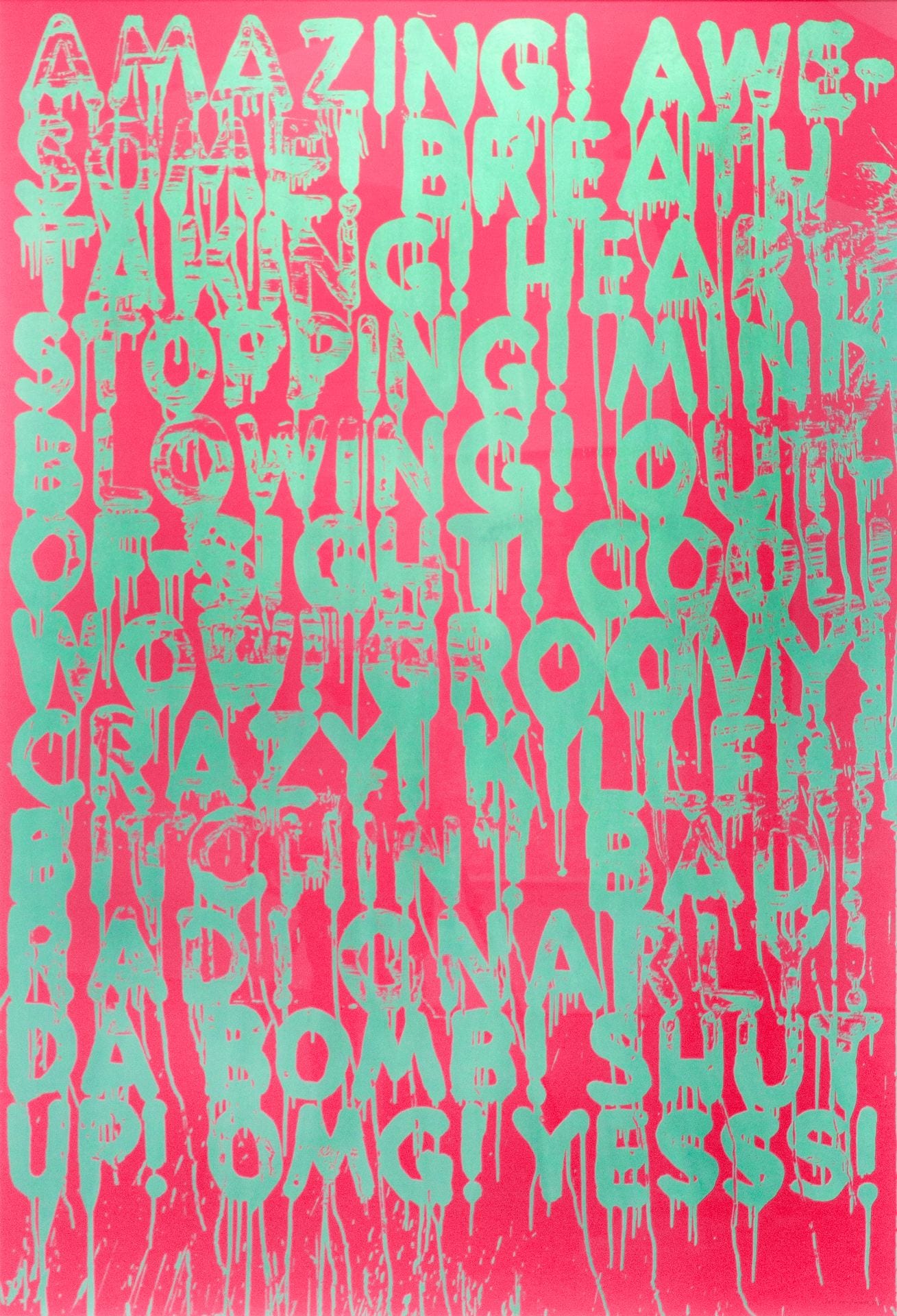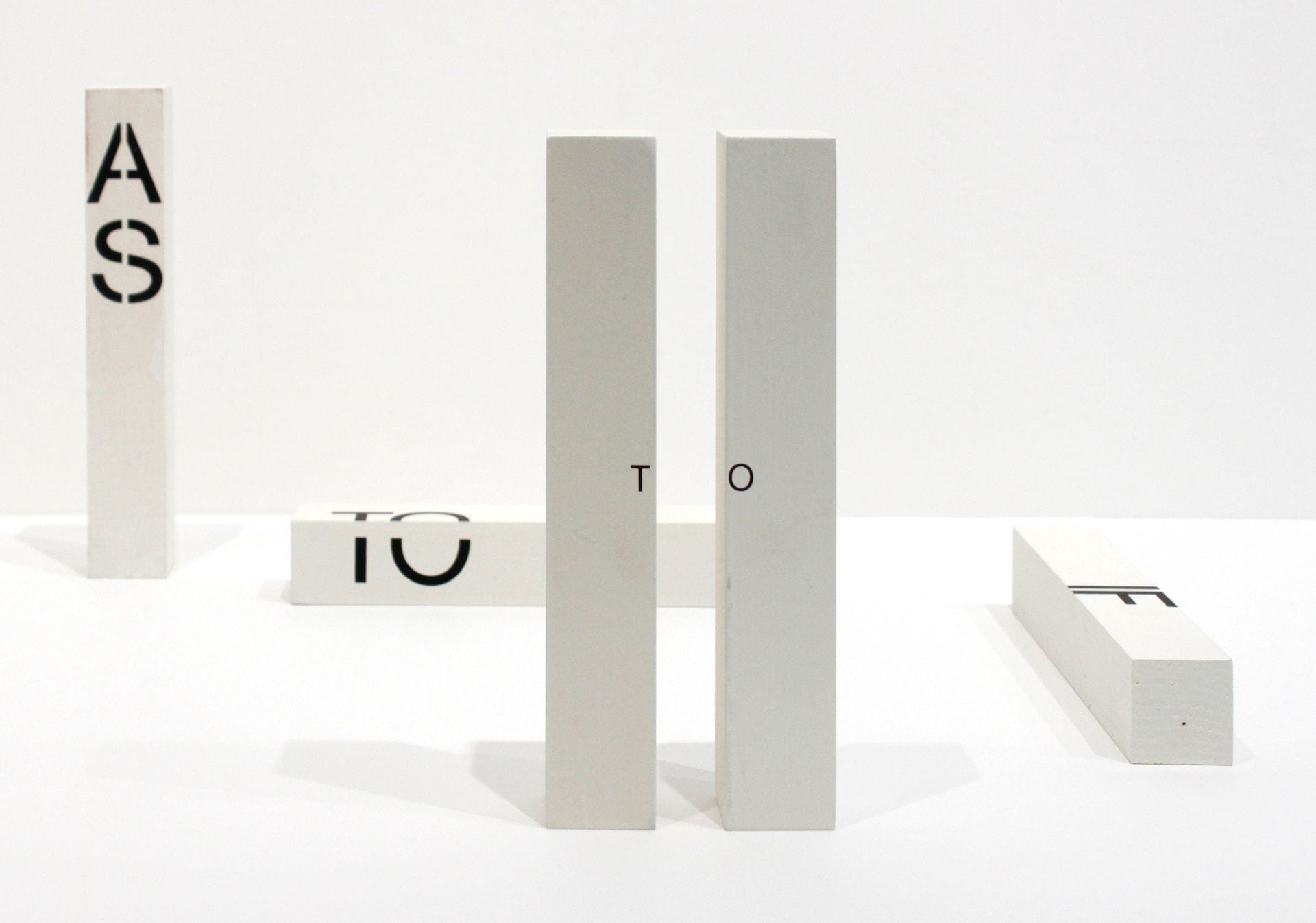‘Language as Medium’ Uses Text to Question Our Cultural Norms and Messages
What happens when texts, posts, ads, words and messages that sell, proclaim or vie for your attention become overwhelming?
If you’re one of the seven artists being featured in the Language As Medium exhibition in the School of Art at the J. William Fulbright College of Arts and Sciences, then you channel the inundation of words into new art forms and works.
And that’s just what Mel Bochner, Peter Downsbrough, Alicia Eggert, Dana Frankfort, Jenny Holzer, Kay Rosen and Lawrence Weiner have done, all while consistently utilizing text as their primary imagery and content.
The exhibit is on display now through Dec. 7 at the Fine Arts Center Gallery, located on the first floor of the Fine Arts Building. The exhibition is open Monday through Friday from 9 a.m. to 5 p.m. and Sundays from 2 p.m. to 5 p.m.
The Fine Arts Center Gallery will also host a closing reception for the exhibition from 5 to 7 p.m. Friday, Dec. 7 that is free and open to the public.
School of Art curator and director of exhibitions Marc Mitchell said that while each artist’s connection with language varies, all use text to question an aspect of the cultural landscape.
Mitchell said the featured artists see how social media and increased technology are impacting language and culture, and how society is inundated with words and messages transmitted via newspaper, smartphone, computer or television.
When selecting pieces for the exhibition, Mitchell researched the significance and implications of a written word within the cultural landscape, and explored how art could help cultivate different ways of thinking and understanding.
“I wanted to create a platform to highlight how cultural trends are reflected in the ways in which people converse,” Mitchell said. “More importantly, I wanted our students to see how concepts such as gender, notions of power, political rhetoric and popular culture all weave their way into colloquial language patterns.”
Mitchell said that each artist included in the exhibition uses language with mixed media to provoke cultural critical thinking.
Mel Bochner uses well-known phrases or idioms in prints, to question how individuals receive and interpret linguistic meaning.
Conceptual artist, Peter Downsbrough, creates work that turns conjunctions into iconographic signs that emphasize both written and physical space.
Alicia Eggert calls attention to the ways in which mere location can alter and manipulate meaning, by creating a neon work that highlights Donald Rumsfeld’s 2002 quote regarding ‘known known’s, unknown known’s, and known unknowns.”
The text found in Dana Frankfort’s artwork is meant to be an esoteric entry into the language of painting. Rather than being understood as a word or phrase, fonts become markers for the ethereal nature of constructing a visual image.
As a pioneer of integrating text and media, Jenny Holzer presents cultural and political messages with subversive undertones. Her work seeks to confront the public and provoke thoughtful reflection on subjects such as gender, power and consumerism.
Kay Rosen merges grammatical and typographical strategies to play with syntax and message in her prints and installation work. The video included in this exhibition, Blue Monday, delights in small modifications in meaning that are generated by linking systematic color shifts to days of the week.
By often thinking of himself as a sculptor rather than a conceptual artist, Lawrence Weiner sees language as a material for construction. His work deftly negotiates aspects of typography such as font size, placement on a surface, and new letter forms to help viewers remember the phrase and its visual impact.
For more information about this exhibition and more, visit the Fine Arts Gallery at www.fnargallery.com.
Kayla Crenshaw
Director of Communications, School of Art
479-575-5202 // kaylac@uark.edu






